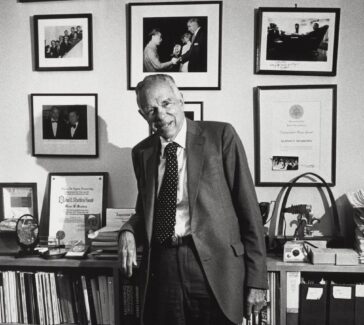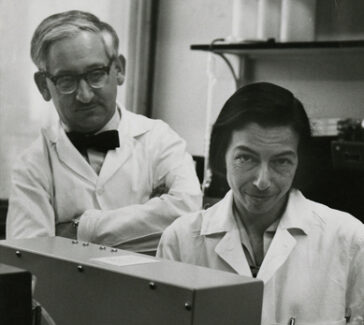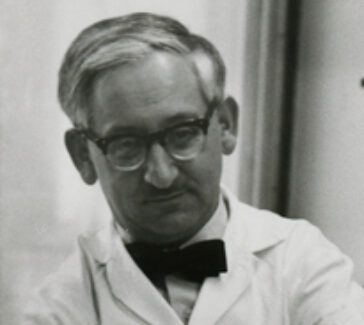Percy Lavon Julian
The grandson of enslaved people, Julian overcame racial barriers to achieve scientific, business, and personal success.
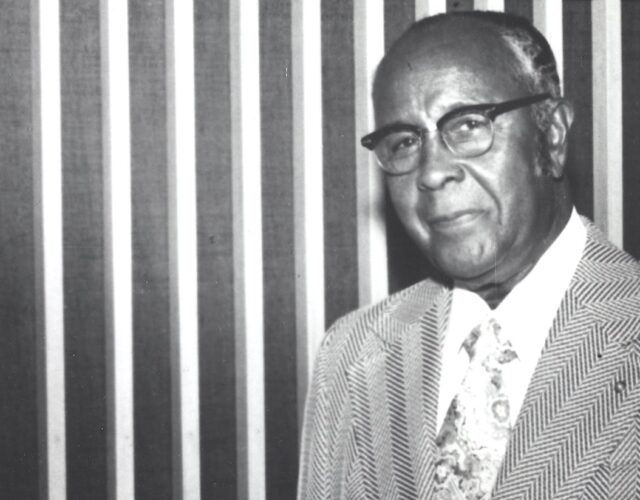
A steroid chemist and an entrepreneur, Percy Julian ingeniously figured out how to synthesize important medicinal compounds from abundant plant sources, making them more affordable to mass produce.
In the 1930s chemists recognized the structural similarity of a large group of natural substances—the steroids. These include the sex hormones and the cortical hormones of the adrenal glands. The medicinal potential of these compounds was clear, but extracting sufficient quantities of them from animal tissue and fluids was prohibitively expensive. As with other scarce or difficult-to-isolate natural products, chemists were called upon to mimic nature by creating these steroids in the lab and later by modifying them to make them safer and more effective as drugs.
Chemists found their starting materials in certain plant substances that were also steroids. Percy Lavon Julian (1899–1975) was among the many scientists, including Russell Earl Marker, Carl Djerassi, and George Rosenkranz, who participated actively in the synthesis and large-scale production of steroids from plant compounds.
Education and Early Career
Julian was born in Montgomery, Alabama, the son of a railway mail clerk and the grandson of enslaved people. In an era when African Americans faced prejudice in virtually all aspects of life, not least in the scientific world, he succeeded against the odds. Inadequately prepared by his high school, he was accepted at DePauw University in Greencastle, Indiana, as a sub-freshman, meaning that he had to take high-school courses concurrently with his freshman courses.
Majoring in chemistry, he graduated as valedictorian of his class in 1920. After graduation he taught chemistry at Fisk University for two years before winning an Austin Fellowship to Harvard University, where he completed a master’s degree in organic chemistry. After Harvard he returned to teaching at West Virginia State College and Howard University.
Physostigmine for Glaucoma
In 1929 Julian traveled to the University of Vienna, Austria, to begin doctoral studies on the chemistry of medicinal plants. Two years later, with degree in hand, he and a Viennese colleague, Josef Pikl, took positions back in the United States at Howard and two years later moved to DePauw.
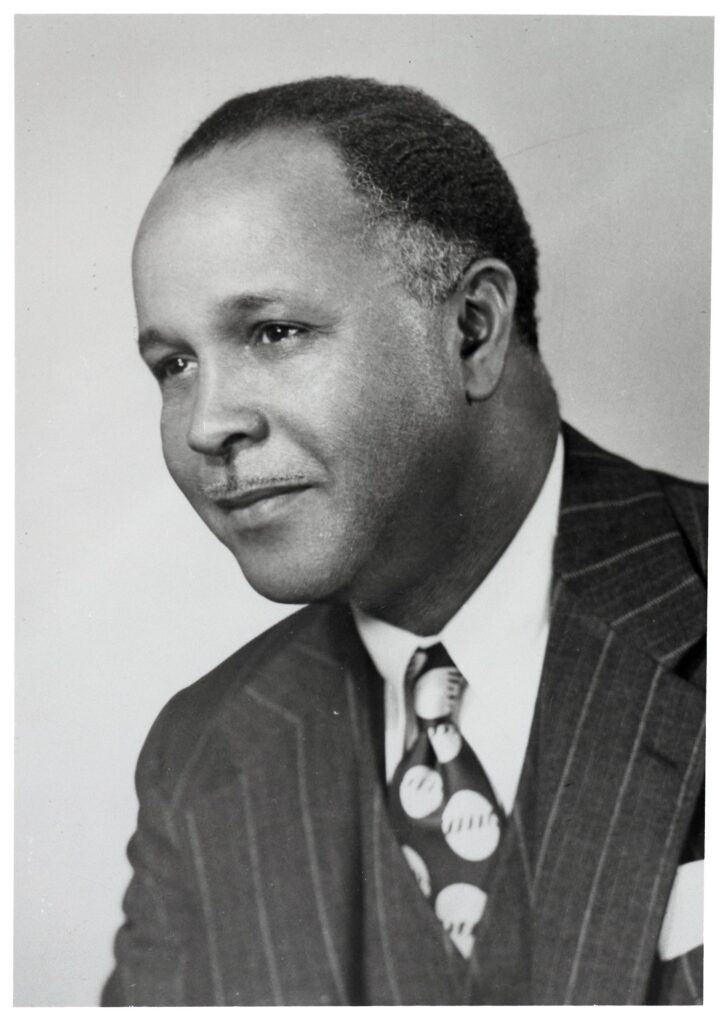
There they accomplished the first total synthesis of physostigmine, the active principle of the Calabar bean, used since the end of the 19th century to treat glaucoma. Physostigmine, an alkaloid, eases the constriction of outflow channels from the eye’s aqueous humor to relieve high pressure there, which, if left untreated, damages the retina and eventually causes blindness.
Steroids from Soybeans: Progesterone
Meanwhile researchers in many countries were seeking innovative and cost-effective ways to synthesize steroids, including cortisone and the sex hormones. German chemists discovered that the steroid stigmasterol, which Julian had obtained as a by-product of the physostigmine synthesis but was also obtainable from soybeans, could be used in the synthesis of certain sex hormones, including progesterone, a female sex hormone that was important in helping pregnant women avoid miscarriages.
In pursuit of this lead, in 1936 Julian wrote to the Glidden Company in Chicago, requesting samples of their soybean oil. Through a series of events he wound up being hired by Glidden instead, as their director of research in the Soya Division, where he set about figuring out ways to make new products from soybeans.
Three years after arriving at Glidden, Julian learned from plant workers that water had leaked into a tank of purified soybean oil and formed a solid white mass. Immediately identifying the substance as stigmasterol, he realized he had stumbled upon a method for producing large amounts of the steroid from soybeans.
Though scientists already knew how to synthesize progesterone from stigmasterol, they didn’t have a method for doing it on a massive scale. Now with large quantities of stigmasterol at hand, he was able to develop an innovative industrial process for converting it to progesterone in bulk, producing five to six pounds of progesterone per day (worth thousands of dollars in those days). Soon other sex hormones were in production.
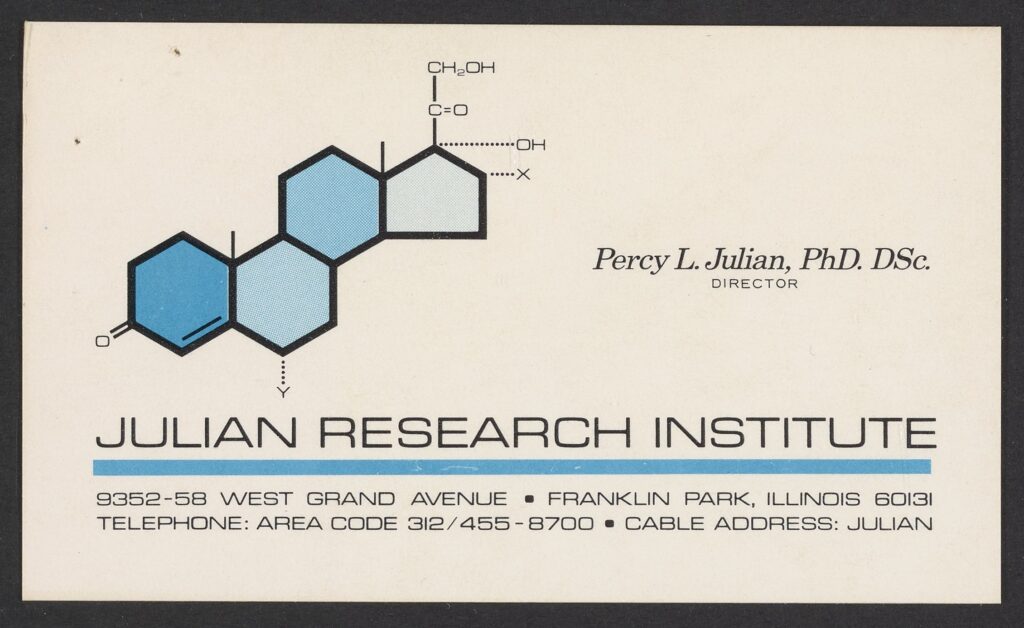
Cortisone and Hydrocortisone
In 1948 scientists at the Mayo Clinic announced their landmark discovery of cortisone, which had remarkable effects on rheumatoid arthritis, and Julian jumped into the exciting competition to synthesize cortisone inexpensively (see also Carl Djerassi). Cortisone is a cortical hormone of the adrenal gland.
In 1949 Julian developed a new synthesis for a related substance (called “Substance S”) also present in the adrenal cortex and differing from cortisone by only an oxygen atom. From this substance he was able to synthesize both cortisone and hydrocortisone. Hydrocortisone and its derivatives today are more widely prescribed than cortisone products, and most industrial syntheses still begin along the same route that Julian pioneered.
Later Life
Julian remained at Glidden until 1954, when he founded his own company, Julian Laboratories of Franklin Park, Illinois, and Mexico City (which he eventually sold to Smith, Kline and French). Throughout his life he was socially active in groups seeking to advance conditions for African Americans, helping to found the Legal Defense and Educational Fund of Chicago, and serving on the boards of several other organizations and universities.
Featured image: Dr. Percy Lavon Julian honored at MacMurray College, 1972.
You might also like
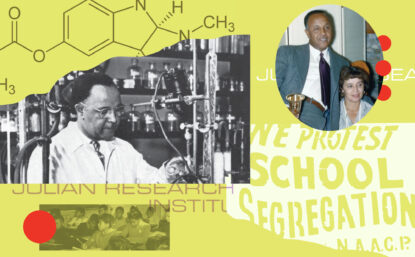
DISTILLATIONS MAGAZINE
Percy Julian and the False Promise of Exceptionalism
Reflecting on the trailblazing chemist’s fight for dignity and the myths we tell about our scientific heroes.
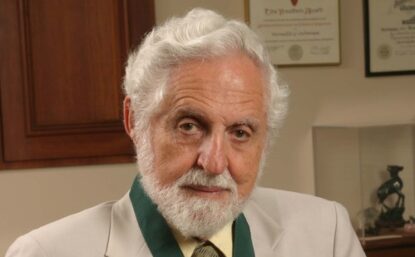
SCIENTIFIC BIOGRAPHIES
Carl Djerassi
This prolific chemist made crucial contributions to the development of synthetic cortisone and the birth control pill.
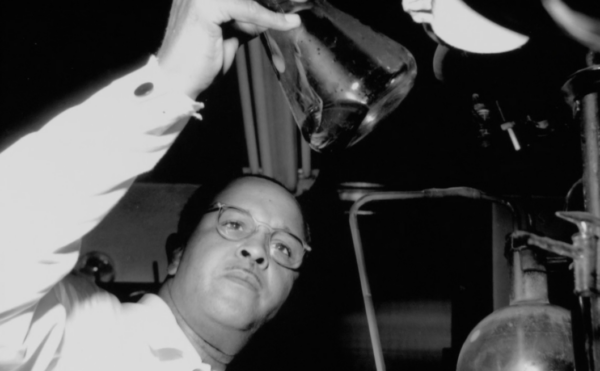
PBS RESOURCE KIT
Who Was Percy Julian?
Percy Julian overcame racial discrimination to emerge as one of the most influential scientists of the 20th century.

